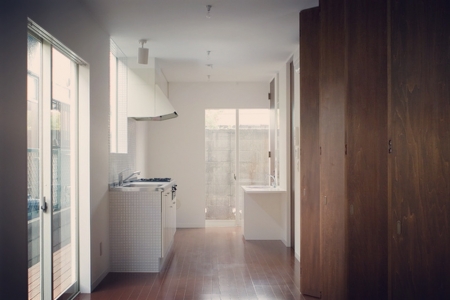アクティビティの自由探し
建築の特徴のひとつに人のアクティビティが内部で起こることがある。逆に言えば、内部で人のアクティビティが起こらなければ建築とは言えない。
人のアクティビティは様々な方向に、自由に起こすことができる、しかし、その方向は建築に左右される。だから、人のアクティビティが建築デザインの対象になるとも言えるが、これが何とも不自由である。
当然だが、建築は人のアクティビティのみで決まる訳ではない。その他の要素、例えば、建築の構造、法規、予算など、まだまだたくさんあるが、およそそれらのほとんどが人のアクティビティを制限するものばかりと言っても過言ではない。
建築の中で、日常生活に直結するのは、人のアクティビティであり、それが制限されるということは、日常生活が制限されることでもある。
だから、余計に人のアクティビティがいつの時代でも建築のデザインの対象として扱われ、そこでどのような折り合いをつけるのか、強引に引き寄せるのか、他を無視するのかなど、様々なアプローチが存在する。
いずれにしても、この不自由さから逃れるためにスケッチをしているといつも思ってしまい、大半の時間を自由への道を探すために使っているように思う。
"Free search for activities"
One of the architectural features is that human activities occur inside. Conversely, if there is no human activity inside, it cannot be called architecture.
Human activities can occur freely in various directions, but the direction depends on the architecture. Therefore, it can be said that human activities are subject to architectural design, but this is inconvenient.
Naturally, architecture is not determined solely by human activity. There are still many other factors, such as architectural structures, regulations, budgets, etc., but it's no exaggeration to say that most of them only limit human activities.
In architecture, what is directly connected to daily life is human activity, and limiting it means limiting daily life.
Therefore, there is a variety of approaches to human activities that are always treated as an object of architectural design at any time, such as how to make arrangements, forcibly attract, or ignore others.
Either way, I always think that I'm sketching to escape this inconvenience, and I spend most of my time looking for a way to freedom.

